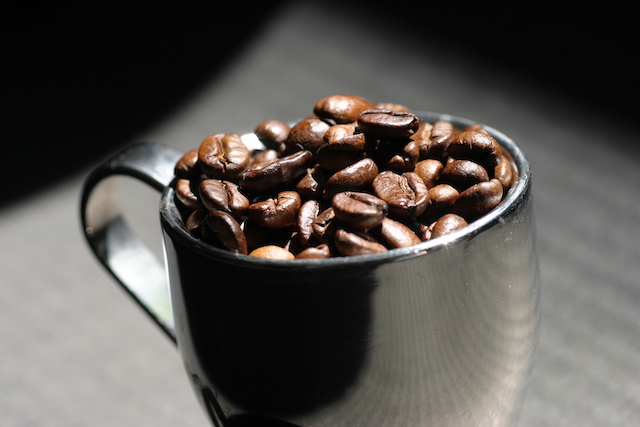12 Ways To Increase Iron Level In Toddlers
Iron is an essential nutrient for toddlers, playing a critical role in their growth and development. Adequate iron levels are vital for producing hemoglobin, supporting brain development, and maintaining a healthy immune system. Unfortunately, iron deficiency is relatively common in young children, which can lead to anemia and other health issues. This article will explore effective ways to increase iron levels in toddlers, ensuring they receive the necessary nutrients for optimal health.
How to increase iron level in toddlers
Parents should know how to increase iron level in toddlers because toddlers have unique nutritional requirements, and their need for iron is particularly high during this stage of rapid growth. The recommended dietary allowance for iron in toddlers aged 1 to 3 years is about 7 mg per day. Iron deficiency can lead to developmental delays, behavioral issues, and an increased susceptibility to infections. Understanding the significance of iron and the potential consequences of deficiency can motivate caregivers to prioritise iron-rich foods in their toddlers’ diets.
Signs of iron deficiency in toddlers
Before implementing strategies to increase iron levels, it’s essential to recognize the signs of iron deficiency in toddlers. Common symptoms include:
-
- Fatigue and lethargy: A tired or lethargic toddler may indicate low iron levels.
- Pale skin: Noticeable paleness, especially in the gums or inside the eyelids, can be a sign of anaemia.
- Frequent infections: A compromised immune system may lead to more frequent illnesses.
- Poor appetite: Iron deficiency can affect a toddler’s interest in food.
If you suspect your toddler may have low iron levels, consulting a healthcare professional for assessment and advice is crucial.
Dietary strategies to increase iron levels in toddlers
1) Incorporate iron-rich foods
The most effective way to boost iron levels in toddlers is through their diet. Here are some excellent sources of iron to consider:
Heme iron sources
Heme iron, found in animal products, is more easily absorbed by the body compared to non-heme iron. Include the following in your toddler’s diet:
-
-
-
-
- Red meat: Beef and lamb are rich in heme iron.
- Poultry: Chicken and turkey are excellent sources.
- Fish: Fish like salmon and tuna also provide heme iron
-
-
-
Non-heme iron sources
Non-heme iron, found in plant-based foods, is also essential. While it’s less readily absorbed, it can still contribute significantly to your toddler’s iron intake:
-
-
-
-
- Legumes: Lentils, chickpeas, and beans are great options.
- Leafy greens: Spinach, kale, and collard greens offer iron.
- Fortified cereals: Many breakfast cereals are fortified with iron, making them an easy choice for toddlers.
-
-
-
2) Pair iron with vitamin C
Vitamin C significantly enhances the absorption of non-heme iron. Pairing iron-rich foods with vitamin C sources can boost your toddler’s iron levels effectively. Consider these combinations:
-
-
-
-
- Fruits: Serve sliced strawberries, oranges, or kiwi with meals.
- Vegetables: Include bell peppers, tomatoes, or broccoli alongside iron-rich foods.
-
-
-
3) Limit calcium-rich foods during iron meals
Calcium can inhibit iron absorption, so it’s wise to manage the timing of calcium-rich foods in your toddler’s diet. If your toddler consumes dairy products, try to separate these from iron-rich meals:
-
-
-
-
- Timing: Serve dairy products like milk or cheese at different times than iron-rich meals to maximise absorption.
-
-
-
4) Opt for fortified foods
Fortified foods can significantly contribute to your toddler’s iron intake. Many products are enriched with iron, making them convenient choices:
-
-
-
-
- Cereals: Choose iron-fortified cereals specifically designed for toddlers.
- Bread: Whole grain and fortified breads can be excellent sources of iron.
-
-
-
5) Be mindful of snack choices
Snacks can also play a role in increasing iron levels. Opt for iron-rich snacks to help your toddler meet their daily requirements:
-
-
-
-
- Nut butters: Spread almond or peanut butter on whole grain toast or fruit.
- Hummus: Serve hummus with vegetable sticks or whole grain crackers.
- Dried fruits: Options like apricots or raisins are good sources of non-heme iron.
-
-
-
6) Introduce iron supplements if necessary
If dietary changes alone do not suffice, iron supplements may be considered. However, it’s crucial to consult a healthcare professional before starting any supplementation. Here are some important considerations:
-
-
-
-
- Types of supplements: Iron supplements come in various forms, including liquids and chewables designed for toddlers.
- Dosage: Follow the recommended dosage provided by your healthcare provider to avoid excessive iron intake.
-
-
-
7) Encourage a balanced diet
A balanced diet is vital for overall health and can contribute to better iron levels. Ensure your toddler’s meals are varied and include a range of nutrients:
-
-
-
-
- Whole grains: Incorporate brown rice, quinoa, and whole grain pasta.
- Fruits and vegetables: Aim for a colourful plate to provide essential vitamins and minerals alongside iron.
-
-
-
8) Offer iron-rich smoothies
Smoothies can be a fun and effective way to sneak in iron-rich foods. Consider blending the following ingredients for an iron-boosting drink:
-
-
-
-
- Spinach or kale: These leafy greens are rich in non-heme iron and can be added to smoothies without altering the taste significantly.
- Fruits: Add vitamin C-rich fruits like bananas, oranges, or berries to enhance flavour and absorption.
- Nut butter or yogurt: Include nut butter for added protein and creaminess.
-
-
-
9) Make iron-rich foods appealing
Toddlers can be picky eaters, so presenting iron-rich foods in a fun and appealing way can encourage them to try new options. Here are some ideas:
-
-
-
-
- Fun shapes: Use cookie cutters to create fun shapes out of sandwiches or fruits.
- Colourful plates: Present a variety of colourful foods to make the meal visually appealing.
- Involvement: Involve your toddler in meal preparation, allowing them to help wash or mix ingredients.
-
-
-
10) Monitor iron levels regularly
Keeping track of your toddler’s iron levels is essential for ensuring they are receiving adequate nutrition. Regular check-ups can help identify potential deficiencies early on:
-
-
-
-
- Consult healthcare providers: Regular paediatric visits can help monitor growth and nutritional status, including iron levels.
- Blood tests: If necessary, your healthcare provider may recommend blood tests to assess iron levels and determine if further action is needed.
-
-
-
11) Promote healthy eating habits
Encouraging healthy eating habits from a young age can have lasting effects on your toddler’s nutritional status. Here are some tips for fostering healthy eating behaviours:
-
-
-
-
- Create a routine: Establish regular meal and snack times to promote a sense of stability.
- Lead by example: Model healthy eating behaviours by consuming iron-rich foods yourself.
- Be patient: It may take several attempts for toddlers to accept new foods, so continue offering iron-rich options without pressure.
-
-
-
12) Educate yourself and caregivers
Knowledge is key to effectively managing your toddler’s nutritional needs. Educate yourself and anyone involved in your child’s care about the importance of iron and how to increase levels:
-
-
-
-
- Resources: Utilise reputable resources like paediatric nutrition books, articles, and websites to stay informed.
- Work together: If your toddler is in daycare or has caregivers, ensure they understand the importance of iron-rich foods in your child’s diet.
-
-
-
Grow with the right iron levels
Increasing iron levels in toddlers is a crucial aspect of their health and development. By implementing dietary strategies, encouraging healthy eating habits, and monitoring their nutritional status, caregivers can effectively boost their toddlers’ iron levels. Remember, if you suspect iron deficiency or have concerns about your toddler’s diet, consulting a healthcare professional is always recommended. With the right approach, you can help ensure your toddler grows strong and healthy with adequate iron levels.



